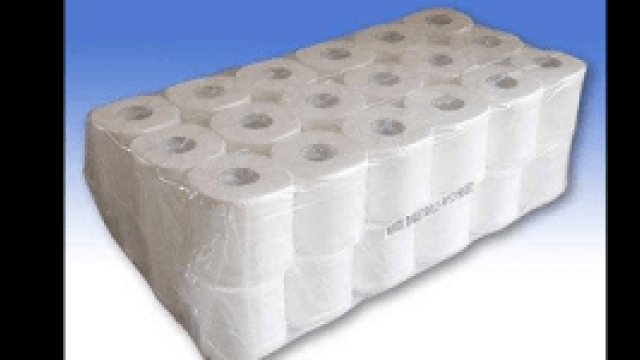Welcome to the intriguing world of toilet paper manufacturing, where the humble roll that brings us comfort and cleanliness undergoes a fascinating transformation from pulp to plushness. In this article, we will be delving into the intricate process of crafting this essential everyday product. Join us as we uncover the secrets behind the creation of toilet paper and explore the remarkable journey it takes from its origins in harvested trees to the luxurious roll that graces our bathrooms. Prepare to unravel the mystery of toilet paper manufacturing as we embark on a captivating journey into the fascinating world of paper production.
The Paper Manufacturing Process
Toilet paper manufacturing involves a series of intricate steps to transform raw materials into the soft, reliable product that we all depend on. This article will guide you through the essential stages of paper manufacturing for toilet paper, allowing you to gain a deeper understanding of the fascinating process.
Raw Material Selection:
Toilet paper production begins with careful selection of raw materials. Typically, high-quality wood fibers, such as softwood or hardwood, are chosen due to their strength and desirable texture. These fibers are sourced responsibly, ensuring sustainability and environmental consciousness.Pulping and Bleaching:
After the raw materials have been gathered, they undergo pulping. In this step, the wood fibers are mechanically or chemically broken down into a fiber slurry. This slurry is then thoroughly cleaned to remove impurities and unwanted substances. Bleaching may also occur during this stage to enhance the whiteness and visual appeal of the final product.
Bulk Napkins PaperSheet Formation:
Once the pulping and bleaching processes are complete, the refined fibers are dispersed in water, creating a homogeneous mixture. This mixture is then spread evenly over a wire mesh screen, allowing the excess water to drain. Through careful manipulation, the fibers bond together, forming a continuous sheet. As the water continues to drain, the sheet gradually gains strength.
By exploring and understanding these initial steps, you gain valuable insights into the intricate world of toilet paper production. In the upcoming sections, we will delve deeper into the subsequent stages of manufacturing, unraveling the intricate mysteries that transform these sheets into our beloved, much-needed rolls of comfort.
###Key Steps in Toilet Paper Manufacturing
Toilet paper manufacturing involves a series of important steps that contribute to the creation of this essential product. In this section, we will explore three key processes involved in toilet paper manufacturing.
Pulp Preparation: In order to create toilet paper, the first step is to obtain the raw material known as pulp. Pulp can be derived from various sources, including wood, recycled paper, or a combination of both. The wood is chipped and processed to remove impurities, while recycled paper is sorted and cleaned to ensure a high-quality pulp. Once the raw material is ready, it undergoes a refining process to break the fibers down into a fine pulp.
Paper Machine: Once the pulp is prepared, it is ready to be transformed into paper. This process takes place in a machine known as a paper machine. The pulp is mixed with water to form a slurry and then spread evenly onto a mesh conveyor belt. As the water drains away, the fibers bond together to form a continuous web of paper. This web then passes through a series of press rolls to remove excess water and increase its density. Finally, the paper is dried using heat and steam, resulting in a smooth and dry sheet.
Converting and Packaging: After the paper is dry, it enters the converting phase where it is transformed into individual toilet paper rolls. The large rolls of paper are cut into smaller widths, typically around 4.5 inches, and then rewound onto smaller cardboard tubes. The rolls are perforated at specific intervals to allow for easy tearing. Once the rolls are complete, they are packaged either individually or in multi-roll packs, ready to be shipped and used in households around the world.
These key steps in toilet paper manufacturing demonstrate the intricacy and precision required to produce a product that we often take for granted. As we unravel the mystery behind toilet paper manufacturing, we gain a deeper appreciation for the effort and technology involved in bringing this essential item into our daily lives.
Quality Control in Toilet Paper Production
To ensure the high quality of toilet paper, extensive quality control measures are implemented throughout the production process. These measures aim to guarantee that each roll of toilet paper meets the safety and performance standards expected by consumers.
The first step in quality control is the careful selection and inspection of raw materials. The paper used in toilet paper manufacturing must be of the appropriate strength, softness, and absorbency. To achieve this, manufacturers closely monitor the sourcing and characteristics of the pulp used in production. Additionally, they employ advanced testing techniques to check for any impurities or defects in the paper before it is fed into the manufacturing process.
Once the paper is ready for processing, quality control continues at each stage of production. Modern toilet paper manufacturing lines are equipped with sensors and automated systems that monitor key parameters such as paper thickness, moisture content, and perforation accuracy. These systems ensure that the toilet paper being produced maintains consistent quality and meets the specified requirements.
Final inspection is conducted on the finished rolls of toilet paper before they are packaged and shipped to stores. This inspection involves visually checking the appearance of each roll to identify any defects or inconsistencies. Additionally, the rolls may undergo strength and absorbency tests to ensure they perform as expected.
By implementing robust quality control procedures, toilet paper manufacturers are able to deliver products that not only meet consumer expectations but also prioritize their safety and comfort. These measures provide consumers with the confidence that the toilet paper they purchase is of the highest quality.




